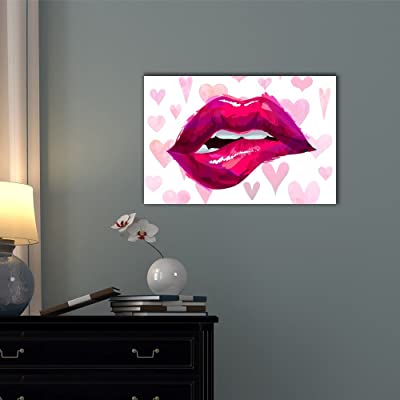In this growing digital world, our appearances are becoming even more of an important factor than before. If you’re like us, you constantly take selfies and a variety of other pictures to post on social media! Perhaps you’ve even posted too many pictures! Are you interested in changing your style, or looking for some tips and tricks to up your makeup game? Why not read below for some makeup wall art facts that will clue you in on the history of makeup and other beauty products!
Egypt

Although makeup has existed in some form since the beginning of human civilization, there are certain ancient societies that have propelled makeup all the way to the forefront of modern culture. In ancient Egypt, skincare and cosmetics were parts of daily grooming routines. It was during this time that creams and oils became popular to use for protection against the harsh desert sun. Egyptians even began to crush red ochre (clay) and mix it with water, thus creating lipstick and blush. Notably, Cleopatra used dark black kohl (charcoal and other minerals) as eyeliner. This created the famous “cat-eye” or “winged” eyeliner effect that is still commonly used today. Read below for more makeup wall art facts!
Polish

Did you know that makeup can often carry cultural or historic significance within a society? In ancient China, for example, people of nobility would often paint their nails in order to visually distinguish themselves from the general public. In China, nail polish was made from a number of different materials like: beeswax, egg whites, or colored minerals. Different colors were often used to symbolize different meanings or emotions. Despite nail polish existing for hundreds of years, it was never patented as an official product until 1919. Back then, the only official colors for nail polish were varying tone of light pink. Read below for more makeup wall art facts.
Mascara

Over time, makeup has evolved to become easier to use. For example, mascara used to be much more difficult to apply. Early in recorded history, mascara was applied by dipping a small brush into hot water. After being dipped, the brush would be placed onto a mixture or minerals and other dark pigments. Then, the user would have to manually clean the brush in order to remove excess mascara before applying. Doesn’t that sound difficult? Speaking of mascara, here’s another tip to know! Many people believe that you should pump the mascara wand in and out of the tube to get more mascara onto the wand’s bristles. Do not do this! Pumping the wand dries out the mascara within the tube by introducing excess air. Instead, twirl the wand inside the tube gently. Read below for more wall art facts.
Ancient History

Interested in knowing some more ancient history regarding makeup? Did you know that in ancient Rome, they took skincare very seriously? Undesirable marks like wrinkles, sunspots and freckles were deemed as sacrilege! In order to soften the appearance of these marks, Romans started to use swan fat and congealed donkey milk. Sometimes, they’d even be treated with the burnt remnants of snails! Want to know some more history? Did you know that Cleopatra was so flamboyant that whenever she traveled by sea, she would soak the sails of her ships in perfume for days on end? Once soaked adequately, she’d have the sails dried and then reattached to her ships. This way, her ships had a fragrance that you could smell miles away. Whenever Cleopatra was going somewhere, you could smell her coming! Read below for more wall art facts.
Testing
When shopping for foundation, it’s important that you get a close match in terms of skin tone. Having a mismatched foundation can lead to disastrous results! Ideally, you want people to barely notice you’re wearing makeup. Having a skin tone that is different than your foundation will immediately draw negative attention to yourself! When shopping for foundation, many people test the color of it by dabbing a small amount on their hands. Don’t do this! Hands are some of our hardest working appendages. We use them for everything, which naturally means that they are exposed to more elements that make our skin slightly darker. In other words, the skin on your hand isn’t necessarily the exact same color as the skin on your face! To get a shade closest to the color of your face, try matching foundation on the upper part of your chest, below the base of the neck! Did you enjoy these makeup wall art facts?
Conclusion
The history of makeup is much more detailed and complicated than it seems, isn’t it? Ancient societies used makeup for many of the same reasons we do today. In fact, we’re often so inspired by the way ancient societies used it that we mimic their techniques! We hope you learned something new by reading these makeup wall art facts! Why not apply some of the tips you read into your own makeup routine?


